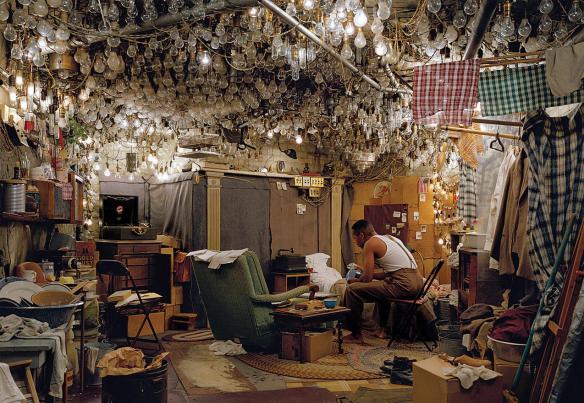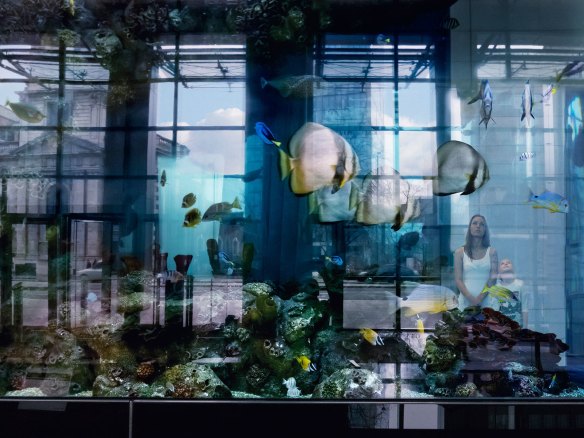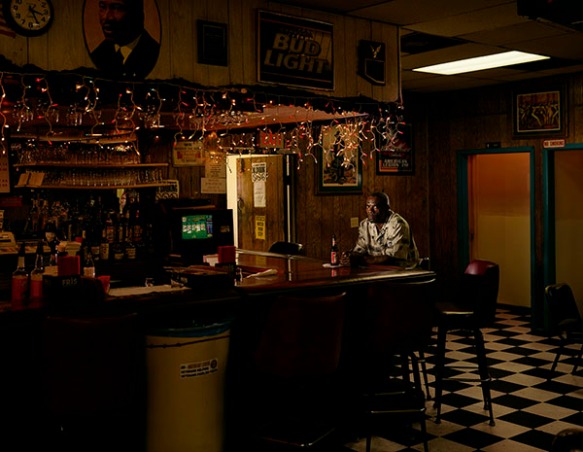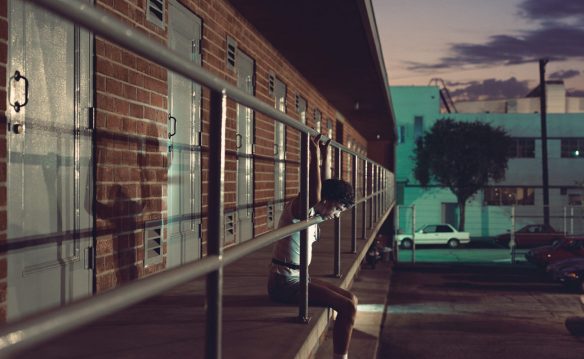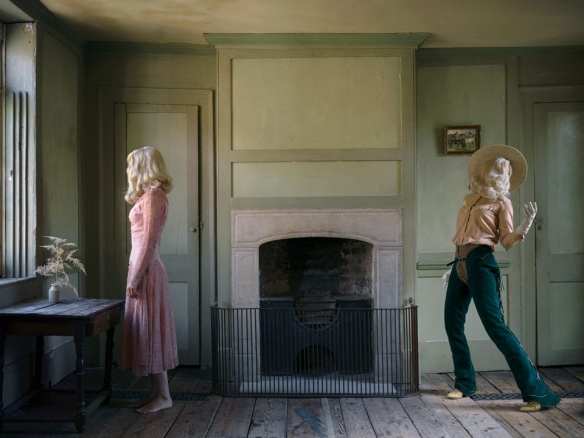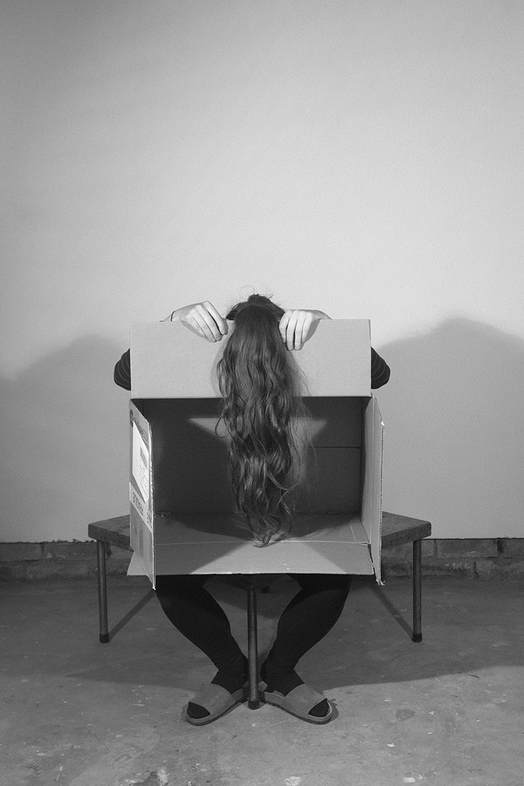03/05/19
Brief:
Produce a constructed image that tells a story, building on what you have learnt in the whole course.
I spent time before starting this exercise thinking about several possible ideas including work using mirrors, either in self-portraiture or still life, an image based on folklore (the red thread) and a series of images based on the defence of Scotland’s coastline. I worked up two in more detail but chose to use the reflected self-portrait as a final piece.
I dislike having my photo taken. If you look over our family archive I am rarely shown, I am usually the photographer. I rarely even take selfies. I have tried to develop this aspect of my photography by taking regular selfies, with little success and also previously looked into some research on why people take selfies however the group discussed have little in common with my demographic and this didn’t explain my near phobia.
Research:
In earlier exercises in context and narrative I looked at self-portraiture by other artists and photographers and also self-absented portraiture. When I did assignment 3 on my diary, I chose to use self absented work to describe myself and my life.
https://scottishzoecontextandnarrative.wordpress.com/2018/07/30/autobiographical-self-portraiture/
https://scottishzoecontextandnarrative.wordpress.com/2018/10/20/self-absented-portraiture/
https://scottishzoecontextandnarrative.wordpress.com/2018/11/12/assignmemt-3-rethink/
For this assignment I decided to work on self-portraiture but using a reflected image that showed multiple layers and partially disguised the image. In assignment 4 I looked in detail at a series of images where the photographers (Mizutani and Bailey) used deliberate camera movement and stacking of images to give blur and depth to the final image. When I tried my initial photograph of a reflection in my window, I found that the double glazing gave a similar effect of movement and layered images but also distorted the image slightly. I then added in a mirror behind the window to give a further layer and produce a triplicate image.
https://scottishzoecontextandnarrative.wordpress.com/2019/02/26/assignment-4-redo/
Mirrors have had a long history in art and photography. Initially the only way an artist could produce a self-portrait was by looking in a mirror. Photography has somewhat negated that, with the possibility of using a tripod or delayed release and timed photography but the use of mirrors is still common. Davis Campany says ‘Pointing the camera at mirrors is a common strategy among photographers when they begin to explore the medium. It is more than just a coming to terms with the nature and possibilities of the apparatus. While discovering what photography is for them, they attempt to confirm or recognise themselves as photographers. The two go together in a private moment of self-assertion that says: ‘I am curious about this’ or even ‘I am serious about this’ (Campany, 2011).
- Clementina Hawarden
- Vivian Maier © John Maloof
One of the earliest images that shows a mirrored reflection is by Lady Clementina Hawarden (1822-1865) in her image of her daughter, Clementina Maude, 5 Princes Gardens, made in about 1861. The image shows her daughter’s back together with a reflection of her face and the garden behind her (Friedewald, 2018). Vivian Maier (1926-2009), among her huge archive of photographs of life in Chicago and New York, took many images of herself reflected in windows and mirrors. Some of these show multiple reflections and are clearly carefully planned and positioned. Maloof describes her, and her images as ‘a riddle, wrapped in a mystery, inside an enigma’ (Maloof,2019).
- © Jeff Wall Picture for Women
- © Hannah Starkey – Untitled, March 2013
Mirrors are also frequently used in constructed images. Jeff Wall’s image Picture for Women (1978) shows a very formally constructed image of two people, a female and himself, set either side of a camera. There is an implication that the image is reflected – although there are no edges of the frame visible. The woman and man (Wall himself) are both looking towards the assumed position of the camera. This image is based on, or more correctly connected with, Manet’s painting ‘A Bar at the Folies-Bergère’ – although in Manet’s image the mirror is explicit, the girl is reflected, and the male viewer is only seen in the reflection. The ‘male gaze’ made overt. Hannah Starkey also utilises both windows and mirrors in her carefully constructed images such as Prism, September 2008 and Untitled, March 2013 where she shows a multi-layered reflection of buildings and a person in the glass of a fish tank. This multi-layered effect and the need to look carefully at them at the influenced my production of this image.
Practical work details:
I started by simply trying to catch a reflected image of myself our front window, which is double glazed. This was a steep learning curve.
- The initial images were lost because of the lack of clarity in the glass. I had not realised quite how dirty it was, but every speck showed in the photographs. It needed a thorough clean, both inside and outside. I wonder if all the reflected images you see are clear by luck, or if the photographers waited until the glass had been recently cleaned.
- When clean, the images were confused because not only could you see the reflection (actually a double reflection because of the double glazing) but also what was going on inside the room. This was dealt with by hanging a black curtain inside the window.
- I then experimented with adding in a mirror behind the glass so that part of the reflected image was much clearer.
- This was initially held up by an assistant, but we couldn’t work out a way of not showing his hands
- I then balanced the mirror on an easel – but the paint tray, which was a light wood, covered with old paint, was obvious and became the main focal point in the image. This need to be painted black to match the rest of the easel.
- I discovered that the exposure was critical, as the light reflected in the mirror was much brighter than the light reflected in the window, and, although I could sometimes get it balanced, at other times either one was grossly overexposed, or the other underexposed.
- I also found that the background was crucial. At one point some street workmen set up a bright red barrier on the road behind me, which I didn’t notice at all when taking the pictures, but which was clearly showing in the photographs when I looked at them on screen.
- My position was also critical, the combination of effectively three reflective surfaces meant that in some images there were multiple versions and parts of me showing, which made for a very confusing image and moving around gave different effects.
This was a fascinating experiment, looking at layers of reflections and the effect this had on light and exposure, and also emphasising the importance of being aware what is going on in areas of the picture that you do not have control of.
I tried out some of the images in black and white, taking the colour away removed some of the distractions and made the image more about me rather than about the background – so the final effect depends, as always, on what I am really trying to show. However, on consideration I felt that the colour images were more interesting and linked into the earlier work on looking at movement and layered images in landscape photography.
Final Image:
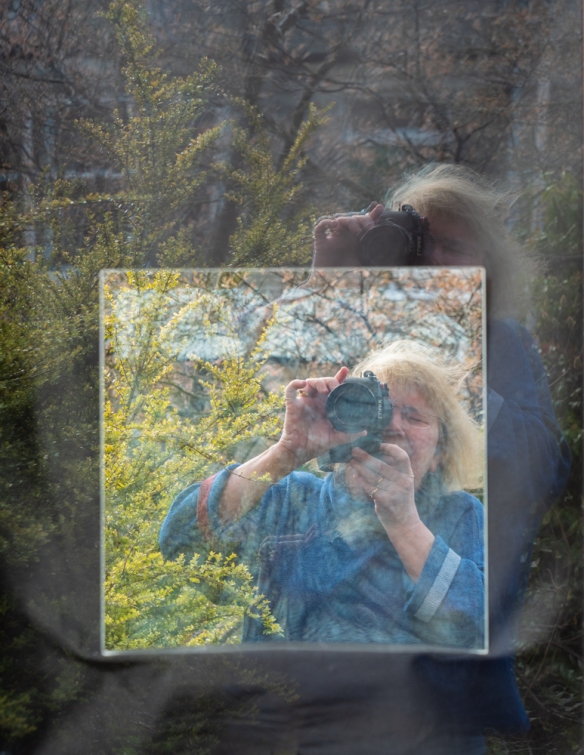
Conclusion:
Producing any piece of work that is not in your ‘comfort zone’ involves research, both theoretical and practical together with repeated attempts. I am pleased with the final image, and am grateful for my tutors’ input who encouraged me to go with something less conventional than I might have chosen.
References and Inspiration:
Bailey, V. (2016). Fragile. Triplekite.
Campany, D. (2011). Jeff Wall, Picture for Women. London: Afterall Books.
Friedewald, B. (2018). Women photographers. Prestel Verlag, pp.78-81.
Maier, V. and Maloof, J. (2011). Vivian Maier street photographer. New York: PowerHouse.
Maloof, J. (2019). About Vivian Maier. [online] Vivian Maier. Available at: http://www.vivianmaier.com/about-vivian-maier/ [Accessed 30 Apr. 2019].
Mizutani, Y. (2018). HDR Nature. Tokyo: amana.
Starkey, H., Cotton, C. and Jobey, L. (2018). Hannah Starkey Photographs 1997-2017. Mack.
Wagstaff, S. (2005). Jeff Wall Photographs 1978-2004. London: Tate Publishing.
Contact Sheets:
- Reflections – Contact Sheet 1
- Reflections – Contact Sheet 2







